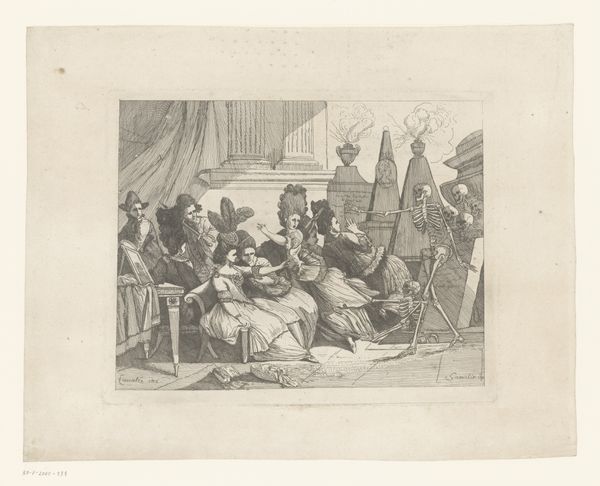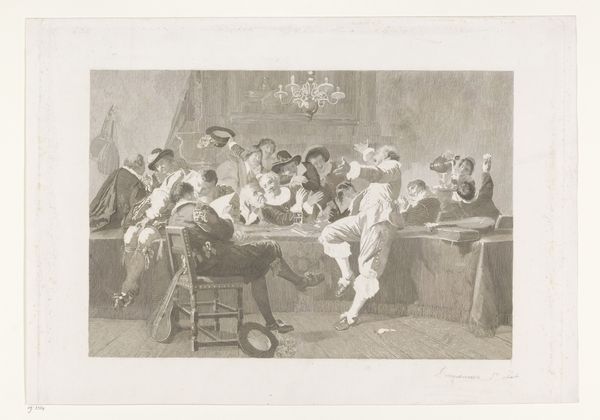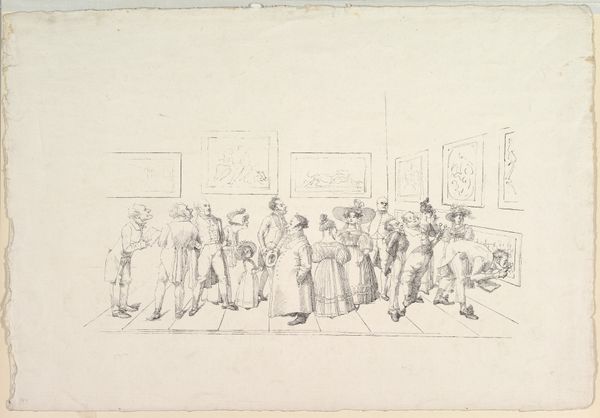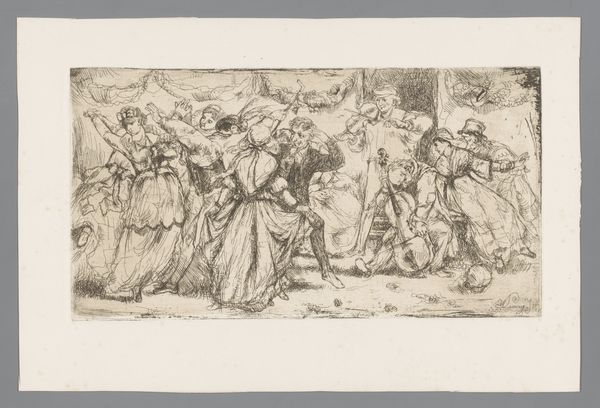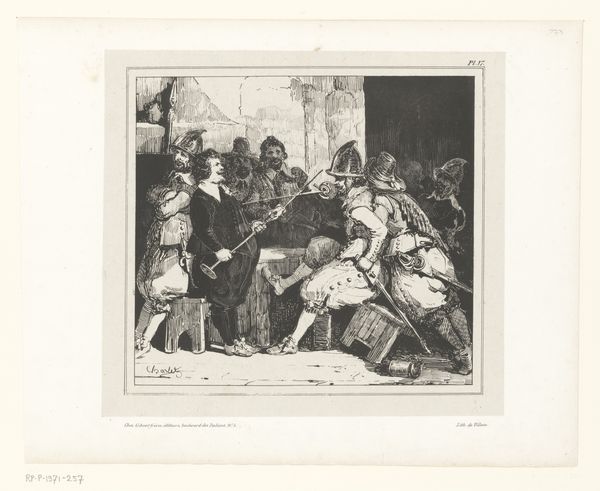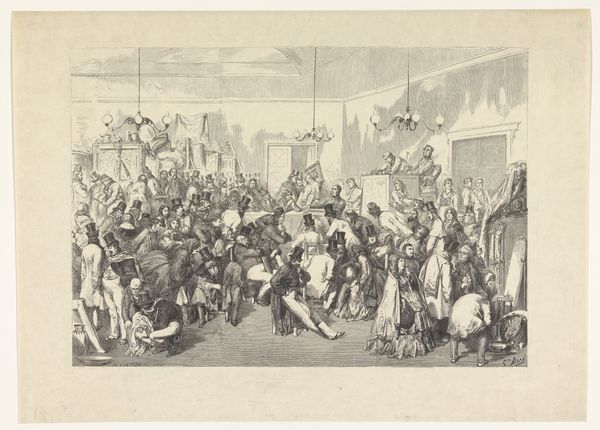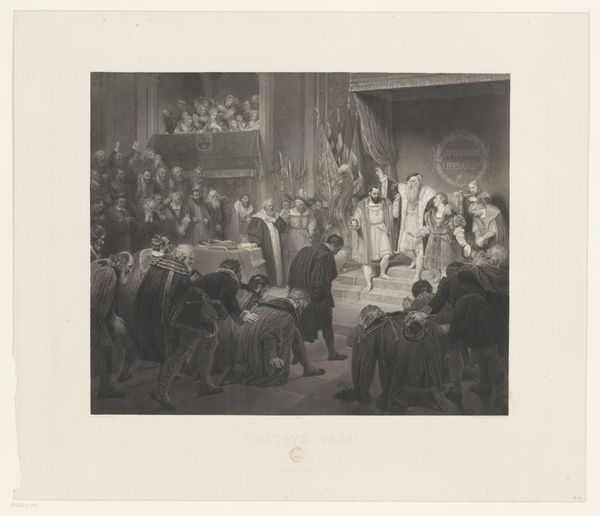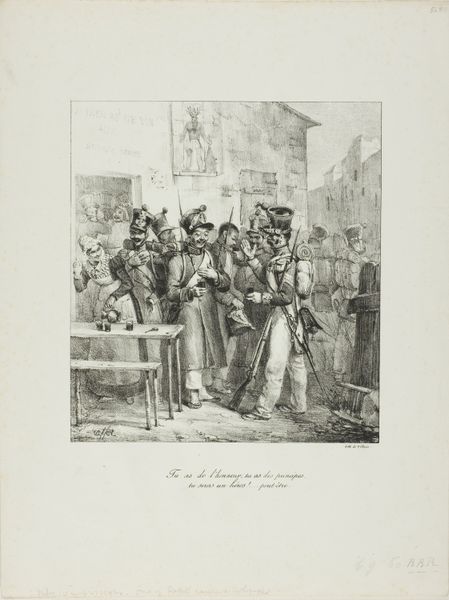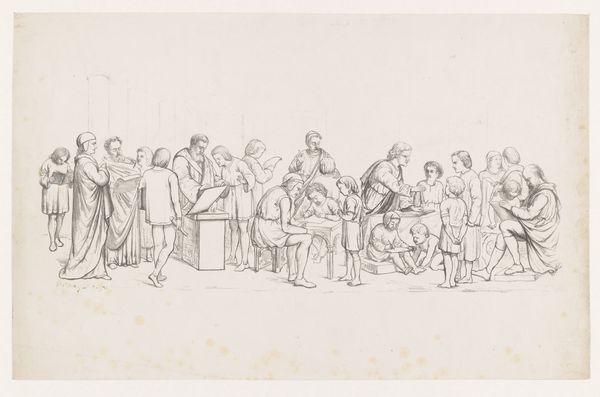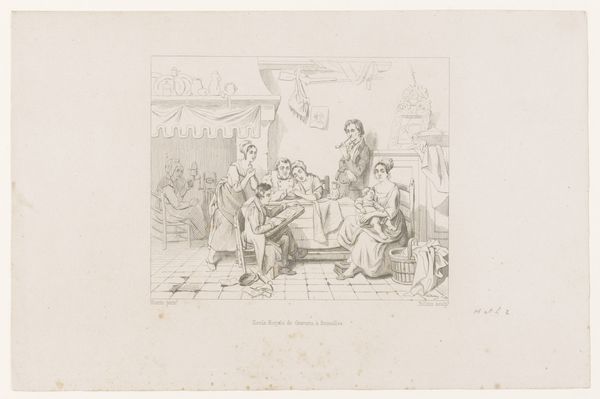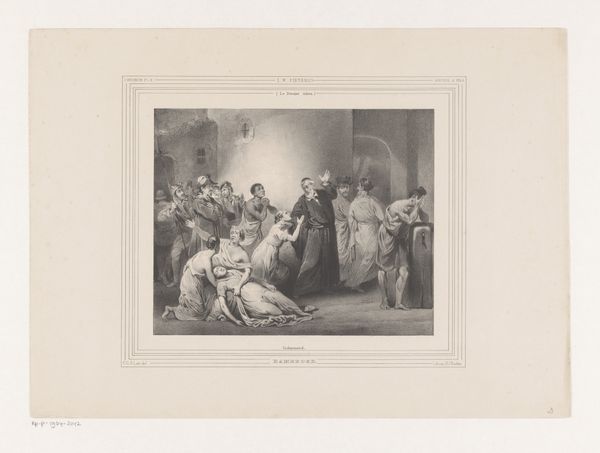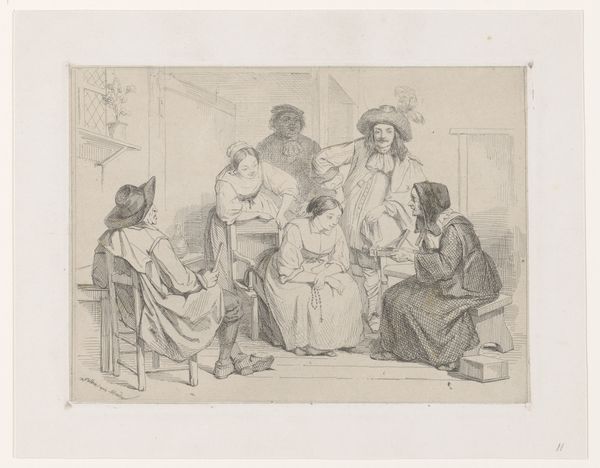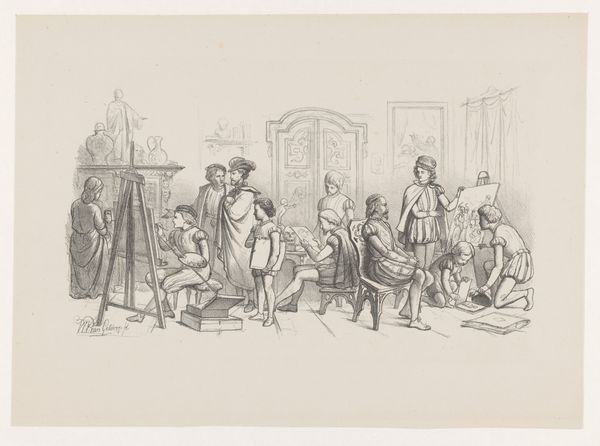
Verkoop van tot slaaf gemaakte mannen, vrouwen en kinderen 1841 - 1910
0:00
0:00
Dimensions: height 220 mm, width 320 mm
Copyright: Rijks Museum: Open Domain
Curator: This drawing by Mari ten Kate, likely created between 1841 and 1910, is titled "Verkoop van tot slaaf gemaakte mannen, vrouwen en kinderen"—"Sale of Enslaved Men, Women, and Children." It depicts exactly what the title describes: a slave auction. Editor: It’s a stark scene. The texture is all created by line and the composition leads the eye straight to the point of transaction. Look at the sharp delineation, creating form that reinforces the inhumanity of the moment. The building behind appears decayed, but this in stark contrast to the fine clothing of those doing the buying and selling. Curator: Precisely. It lays bare the mechanics of the slave trade, focusing on the act of exchange. Ten Kate, though working later in the 19th century, seems to be grappling with the legacy of slavery and its continued impact. It is interesting to remember that the Netherlands was one of the last Western countries to outlaw slavery. He offers a perspective that prompts critical reflection on Dutch colonial history. Editor: And the means of its creation is particularly disturbing; this looks like an engraving or a print— easily reproducible, cheap to distribute. How many copies of this image were made, who was the intended audience, and to what end? Curator: Those questions become urgent, especially when thinking about the proliferation of such imagery at the time and how it was implicated in the ongoing political debates about abolition and human rights. Ten Kate situates these exchanges not just as isolated events but as part of a larger network of power and exploitation. We need to contextualize it as one voice, albeit one among many in the visual representations of slavery, and also think critically about how this era constructed Black identities and subjected bodies. Editor: Absolutely. And you're right, the very material of the artwork is the medium of a very disturbing message. The labor behind reproducing this would itself implicate another form of "production," which reinforces its message. This image does not appear on its own, and in viewing it we also ask: what labor went into its means, its construction, its ultimate "marketability," as it were? Curator: Yes. Looking at art requires this kind of deconstruction to fully appreciate the weight and consequence, not only in historical context, but also in the long-term ramifications still present today. Editor: Indeed. Examining this work through a materialist lens illuminates how deeply enmeshed art can be in social and political practices.
Comments
No comments
Be the first to comment and join the conversation on the ultimate creative platform.
